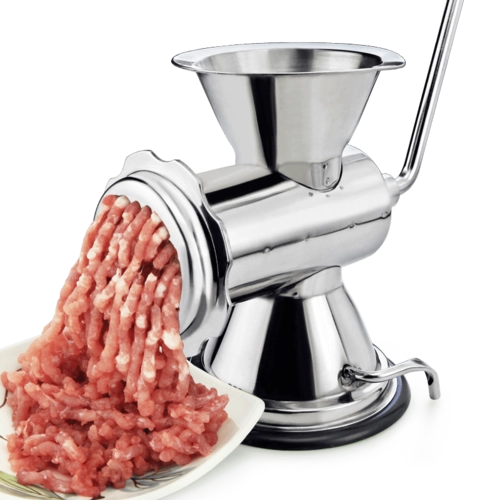
ធ្នូ . 11, 2024 10:26 Back to list
China's Sausage Filling and Tying Machine for Efficient Food Production
Understanding China’s Sausage Binding Machines Features, Benefits, and Market Trends
China has become a hub for manufacturing a wide range of industrial machinery, including specialized equipment designed for food processing. One such key piece of equipment is the sausage binding machine, which plays a crucial role in the meat processing industry. This article explores the features, benefits, and current trends associated with sausage binding machines manufactured in China.
What is a Sausage Binding Machine?
A sausage binding machine is a critical device used in the production of sausages. It primarily binds the sausage casing and fills it with prepared meat mixture, ensuring that the sausage maintains its shape and integrity during cooking and storage. These machines are designed to streamline the sausage-making process, significantly increasing efficiency, consistency, and product quality.
Key Features of Chinese Sausage Binding Machines
1. Automated Operation Modern sausage binding machines from China often feature advanced automation capabilities. This includes programmable settings that allow operators to set specific binding patterns, casing sizes, and meat amounts, leading to high levels of precision and reduced labor costs.
2. Durable Construction Chinese manufacturers typically utilize high-quality stainless steel and other durable materials in the construction of their binding machines. This ensures hygiene, easy cleaning, and resistance to corrosion, which are essential for food processing equipment.
3. High Production Capacity Many Chinese sausage binding machines are capable of producing large quantities of sausages in a relatively short amount of time. This is particularly advantageous for large-scale meat processing businesses that demand efficiency without compromising quality.
4. Versatility These machines can often be adjusted for various types of sausage casings, from natural to synthetic, and can handle different types of meat mixtures, making them highly versatile for manufacturers with diverse product lines.
5. User-Friendly Interface Many machines come equipped with an intuitive control panel that makes it easy for operators to monitor performance and make adjustments as needed. Some models even offer touch-screen interfaces for added convenience.
Benefits of Using Sausage Binding Machines
The implementation of sausage binding machines can yield several benefits
china sausage binding machine

- Improved Efficiency Automation reduces the time and labor required for sausage production, allowing businesses to meet increasing demand without a corresponding rise in labor costs.
- Consistent Quality Automated binding ensures that every sausage is filled and tied uniformly. This consistency is crucial for maintaining product quality and meeting consumer expectations.
- Hygiene and Safety With stringent food safety regulations, using a sausage binding machine minimizes direct human contact with the sausage mixture, helping to maintain hygiene and reduce the risk of contamination.
- Cost Savings Although there is an initial investment, the long-term savings from reduced labor and increased efficiency can significantly offset the costs of purchasing and operating a sausage binding machine.
Current Market Trends
As the demand for processed meat products continues to grow globally, the sausage binding machine market in China is also evolving. Several trends are emerging
- Technological Advancements Continuous innovations in automation and machine learning are leading to smarter sausage binding machines, which can adapt to changing production needs and provide real-time analytics.
- Sustainability With growing consumer awareness regarding sustainability, manufacturers are increasingly focusing on creating machines that produce less waste and use environmentally friendly materials.
- Customization Manufacturers are offering more customizable options to cater to different business sizes and types, from small artisan producers to large industrial operations.
Conclusion
Sausage binding machines made in China are at the forefront of food processing technology, providing efficient, cost-effective, and quality solutions for the meat industry. As the demand for processed meats continues to rise, and as the industry shifts towards automation and sustainability, the role of these machines is more critical than ever. Understanding their features and benefits can assist businesses in making informed decisions regarding their meat processing operations.
Latest news
-
Great Wall DKJC Series Auto Sausage Clipper: Efficient & Durable
NewsJul.25,2025
-
Pneumatic Clipping Machine: Efficient and Reliable Solution for Industrial Applications|Precision Cutting, Durability
NewsJul.21,2025
-
Pneumatic Clipping Machine - Shijiazhuang Bossin Machinery Equipment Co., Ltd.
NewsJul.21,2025
-
Pneumatic Clipping Machine - Shijiazhuang Bossin Machinery Equipment Co., Ltd.
NewsJul.21,2025
-
Pneumatic Clipping Machine - Shijiazhuang Bossin Machinery Equipment Co., Ltd.
NewsJul.21,2025
-
Pneumatic Clipping Machine - Shijiazhuang Bossin Machinery | Precision Cutting, High-Speed Operations
NewsJul.21,2025